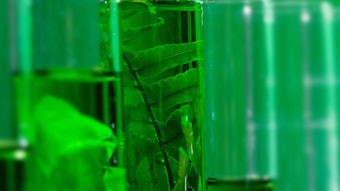“Nature gives you the face you have at 20; it is up to you to merit the face you have at 50.” —Coco Chanel
The antiaging skin care juggernaut has crushed any lotion incapable of turning back the ravages of time, or at least promising to do so. The downside of UV exposure, smoking and pollution has long been known. Sugar formation in the cells, however, presents another front in the battle against aging. Chemically speaking, inside every cell, the Hayflick limit—the number of times a cell divides before it dies (approximately 50)—conspires against dreams of immortality. Receptor for advanced glycation end products (RAGE), too, is not simply the frustration of baby boomers with wrinkles—it is a new enemy of the intracellular matrix, and now it’s time to add the Maillard reaction, the Amadori product and collagen glycation to cosmetic chemists’ list of enemies.
French biochemist Louis-Camille Maillard (1878–1936) is the founding father of the most recent war on skin aging. In 1912, Maillard undertook studies of the reaction between amino acids and sugars, which now bear his name.
Food chemistry is a common part of everyone’s life and clearly illustrates the Maillard reaction. An egg white, for example, is not white before it is cooked. Heating denatures the protein, making it insoluble and, thus, changing it from clear to white. Raw meat is red, cooked meat is brown—and much tastier. The difference is primarily due to the Maillard reaction—the contribution of colors, flavors and odors—and it is where cooking and modern skin treatment find common ground.
The Maillard reaction starts when the carbonyl group of a sugar reacts with an amino group of a protein, producing N-substituted glycosylamine and water. Maillard reactions generally only begin to occur above 140°C (284°F). If the cooking temperature never gets above the boiling point of water (100°C or 212°F), the Maillard reactions will not take place. The resultant glycosylamine of the reaction is unstable and undergoes the Amadori rearrangement to form ketosamines. The formation of an advanced glycation end product begins with the formation of a Schiff base.
For example, the aldehyde group of a glucose molecule will combine with the amino group of a lysine molecule to form an imine, which is a double bond between the carbon atom of the glucose and the nitrogen atom of the lysine. The Amadori product is a rearrangement from the Schiff base wherein the hydrogen atom from the hydroxyl group adjacent to the carbon-nitrogen double bond moves to bond to the nitrogen, leaving a ketone. When the Amadori product is oxidized, most often by transition metal catalysis, an advanced glycation end product (AGE) is formed. The first two steps in this reaction are both reversible; the last step is irreversible.
Pentosidine levels increase with age, and collagen has a long life in the skin. Even though the nonenzymatic process is slow, it accumulates relentlessly as we grow older.
Sugar and the Skin
Many cells in the body bear RAGE, which, when binding with AGEs, contributes to age-related, chronic inflammatory effects. RAGE is also able to bind other ligands, and is wthus as a pattern-recognition receptor. There may be some chemicals, such as aminoguanidine, that limit the formation of AGEs. AGE and RAGE have been extensively studied in diabetics, where the excess sugar accentuates the skin aging process in afflicted patients. Varieties of the RAGE protein that lack the transmembrane and the signalling domain are referred to as soluble RAGE or sRAGE. They may counteract the negative effect of the full-length receptor and provide a means to cure RAGE-associated diseases.
In the skin of healthy individuals, AGEs were reported to accumulate in dermal elastin and collagen and to interact with the cell membrane of dermal fibroblasts. In human fibroblasts, AGE and RAGE interactions may influence the process of skin aging through stimulation of extracellular matrix gene expression. Self-tanning products that employ dihydroxyacetone (DHA), a three-carbon sugar, produce brown color through a Maillard reaction with protein in the skin. Any DHA penetrating beyond the statum corneum will encourage glycation.
AGE Treatment
Limiting sugar intake is one approach to younger-looking skin. Therefore, the use of sugar-based cosmetic ingredients should also be avoided. Actives such as sunflower seed extract or grape seed extract, rich in polyphenols, provide a possible cosmeceutical treatment and alternative. Another currently used active is carnosine, a dipeptide of the amino acids beta-alanine and histidine. It is claimed that carnosine helps prevent cross-linking of collagen and other proteins in skin.
The frontier of glycation end product treatment is probably ALT-711 (phenyl-4,5-dimethylthazolium chloride or alagebrium chloride). It is a proprietary compound in a novel class of agents—AGE cross-link breakers created by Alteon (www.alteon.com), a pharmaceutical company developing drugs for diabetics. The efficacy of these products in skin care, it should be noted, is not the primary motivation of Alteon’s efforts. Antiaging cosmetics have three aims: prevention, maintenance and reversal. Prevention includes avoiding sun, not smoking and proper diet. Sunscreens and antioxidants are two tools that can be used at that level.
Maintenance includes moisturizers, exfollients and biological actives, with specific compounds such as polyphenols providing the muscle.
Reversal, if possible, relies on a more advanced technical approach such as Alteon offers.
Does all this work? Well, the boomers are hitting 60. Look around in 20 years for the answer. The likelihood is that all the emphasis on health and youthful appearance will have a positive cumulative effect. It will make a lot of happy old folks and equally pleased cosmetic companies.
References
D Schmid et al., Collagen glycation and skin aging, www.mibellebiochemistry.com/pdfs/Collagen_glycation_and_skin_aging_-_CT_2002.pdf (Accessed July 13, 2007)










